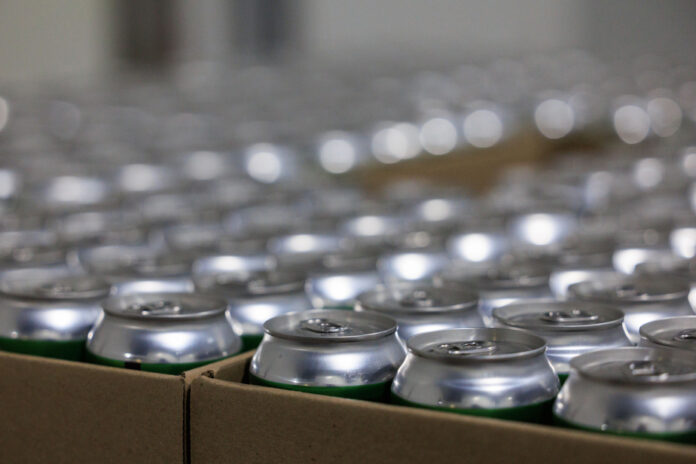Canada’s restaurant industry is bracing for the country’s biggest alcohol excise tax hike in more than 40 years, prompting it to issue warnings that the tax hike could lead to closure of some bars and restaurants.
“Any increase in this very vulnerable time for our sector is just another blow, when we are already down,” lamented Brenda O’Reilly, owner of several restaurants and a brewery in Saint-Jean. of Newfoundland.
“It’s like a death by a thousand cuts. »
Bar and restaurant operators across Canada have already faced several challenges: lockdowns, labor shortages, supply chain issues, and soaring costs of everything from payrolls to oil Cooking. High inflation has further dampened demand, with some consumers preferring to stay home to save money.
The federal tax on alcoholic beverages is to increase by 6.3% on April 1.
Excise duties on alcohol are imposed upon manufacture and adjusted annually for inflation.
Although the fee is separate from provincial liquor board fees and sales taxes, it ultimately affects prices for consumers, said CJ Hélie, president of Beer Canada.
“It is imposed at the point of production and paid for by the manufacturer, meaning it is built into the price of the product and amplified throughout the supply chain from distributor to retailer,” he said. .
The automatic annual tax increase has been a long-time irritant to the liquor industry, but it was more “digestible” when inflation was around 2.0%, Hélie pointed out.
But this year’s adjustment is more than triple the usual increase, and he says it should be reconsidered given the state of the industry.
“When inflation breaks through the ceiling, we have to rethink this automatic formula,” said Hélie. The sector is already in dire straits. To use a rigid formula at a time like this is unacceptable. »
Some brewers may try to absorb the higher costs by postponing their investment plans like new hires, but he believes there are not so many options before passing on the tax hike.
“They will try to recover what they can with wholesale pricing, but that could impact demand and end up costing them lower sales volumes anyway,” Hélie explained.
Alcohol excise duty rates are adjusted by law on an annual basis to take inflation into account, Adrienne Vaupshas, press secretary to Finance Minister Chrystia Freeland, said in an email.
Next month’s increase is equivalent to less than 1 cent on a can of beer, she added.
On a liter of wine, the rate of excise duty goes from $0.688 to $0.731, or just over 4 cents, according to figures provided by the Canada Revenue Agency. For a 750ml bottle of wine, the increase would be closer to 3 cents.
In retail, the impact may be more subtle. Even if it comes on top of other price increases, consumers may notice higher prices.
Factors influencing retail price increases include higher excise taxes and the rising cost of raw materials such as bottles, cans, barley and labels, a spokeswoman said. the Nova Scotia Liquor Corporation, Allison Himmelman, in an email.
In British Columbia, a spokesperson for the BC Liquor Distribution Branch pointed out that it was not possible to assess the level of the price increase that consumers might or might not see.
“Each liquor supplier will decide whether or not to increase their wholesale price to account for the increase they have to pay in excise duty,” Robin Fraser explained in an email.
“Then retailers will make the decision whether or not to adjust the prices for consumers of these products,” Mr. Fraser continued. It is up to each retailer to determine if they want to raise their prices, and by how much. »
Prices for alcoholic beverages rose 5.7% in February compared to the same month last year, according to Statistics Canada.
While this is only slightly higher than last month’s headline annual inflation of 5.2%, April’s tax hike and other increases could see alcohol inflation rise faster than headline inflation later this spring.
“Our sector is struggling and we cannot absorb any further increases,” said Olivier Bourbeau, vice-president of federal affairs at Restaurants Canada. Restaurant margins are always thin, but right now they’re around 2% to 3%. »
That’s partly because restaurants are absorbing some of the higher costs due to inflation, Bourbeau said.
Indeed, while grocery store prices posted a 10.6% year-over-year increase in February, restaurant food prices rose only 7.7%, according to Statistics Canada data.
In addition, prices of alcoholic beverages purchased from stores rose 6.0% in February, while those of alcoholic beverages served in licensed establishments rose only 4.3%, the agency said.
“Restaurants can no longer absorb price increases,” Bourbeau said. But if they pass those costs on to customers, it could hurt their business. »
“At the end of the day, consumers will only agree to pay a certain amount before they start cutting back on their spending. »















